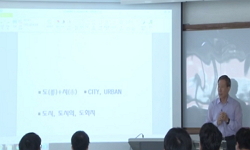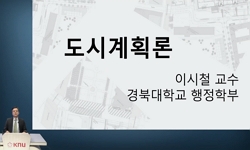This study analyzes the relationships between land use pattern and generation of non-point pollutants in watershed areas. The land use pattern is identified by the area ratio and spatial pattern of impervious surfaces such as roads and roofs of buildi...
http://chineseinput.net/에서 pinyin(병음)방식으로 중국어를 변환할 수 있습니다.
변환된 중국어를 복사하여 사용하시면 됩니다.
- 中文 을 입력하시려면 zhongwen을 입력하시고 space를누르시면됩니다.
- 北京 을 입력하시려면 beijing을 입력하시고 space를 누르시면 됩니다.

하천유역 토지이용과 비점오염물질 발생강도간의 상관관계분석- 도로와 건물의 비율 및 공간적 분포를 중심으로- = A Study on the Feasibility of Residential Site Development in the Second District Unit Plan Area
한글로보기https://www.riss.kr/link?id=A103934332
- 저자
- 발행기관
- 학술지명
- 권호사항
-
발행연도
2003
-
작성언어
-
- 주제어
-
등재정보
KCI등재
-
자료형태
학술저널
- 발행기관 URL
-
수록면
203-216(14쪽)
-
KCI 피인용횟수
5
- 제공처
- 소장기관
-
0
상세조회 -
0
다운로드
부가정보
다국어 초록 (Multilingual Abstract)
This study analyzes the relationships between land use pattern and generation of non-point pollutants in watershed areas. The land use pattern is identified by the area ratio and spatial pattern of impervious surfaces such as roads and roofs of buildings. The intensity of non-point pollutants generation is measured by non-point pollutants load per unit area in a watershed. A regression model is developed to examine the impacts of land use pattern on non-point pollutants generation. The explanatory variables include the amount of rainfall, the duration of preceding non-rainy days, a seasonal dummy, the impervious surface area ratio, the clustering index of buildings, and the distance index of building groups to the rivers, The findings based on the estimation results are as follows: Firstly, a high ratio of impervious surfaces (building and road) increases non-point pollutant loads in the watershed. Secondly, the spatial pattern of impervious surfaces also affects the non-point pollutants load. As buildings are clustered and located near the river, non-point pollutants load increases.
동일학술지(권/호) 다른 논문
-
- 대한국토·도시계획학회
- 이철규(Rhee Chul-Kyu)
- 2003
- KCI등재
-
- 대한국토·도시계획학회
- 오동훈
- 2003
- KCI등재
-
산업클러스터 육성을 위한 지역개발정책에 관한 연구 - 충청북도의 중부고속도로 주변 지역을 중심으로 -
- 대한국토·도시계획학회
- 김윤수
- 2003
- KCI등재
-
- 대한국토·도시계획학회
- 신동호
- 2003
- KCI등재
분석정보
인용정보 인용지수 설명보기
학술지 이력
| 연월일 | 이력구분 | 이력상세 | 등재구분 |
|---|---|---|---|
| 2020 | 평가예정 | 계속평가 신청대상 (등재유지) | |
| 2015-06-09 | 학술지명변경 | 외국어명 : korea Planners Association -> Journal of Korea Planning Association | |
| 2015-01-01 | 평가 | 우수등재학술지 선정 (계속평가) | |
| 2011-01-01 | 평가 | 등재학술지 유지 (등재유지) |  |
| 2009-12-29 | 학회명변경 | 한글명 : 대한국토ㆍ도시계획학회 -> 대한국토·도시계획학회 |  |
| 2009-01-01 | 평가 | 등재학술지 유지 (등재유지) |  |
| 2007-01-01 | 평가 | 등재학술지 유지 (등재유지) |  |
| 2005-01-01 | 평가 | 등재학술지 유지 (등재유지) |  |
| 2002-01-01 | 평가 | 등재학술지 선정 (등재후보2차) |  |
| 1999-07-01 | 평가 | 등재후보학술지 선정 (신규평가) |  |
학술지 인용정보
| 기준연도 | WOS-KCI 통합IF(2년) | KCIF(2년) | KCIF(3년) |
|---|---|---|---|
| 2016 | 0.86 | 0.86 | 0.96 |
| KCIF(4년) | KCIF(5년) | 중심성지수(3년) | 즉시성지수 |
| 0.94 | 0.94 | 1.343 | 0.17 |




 DBpia
DBpia






